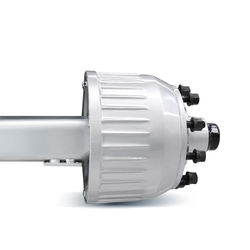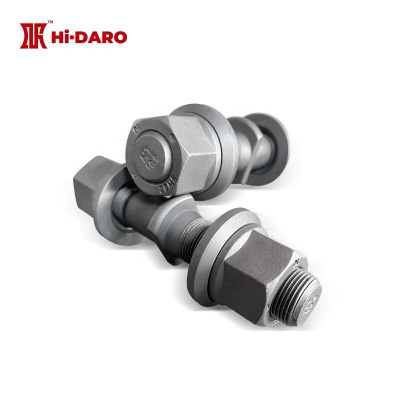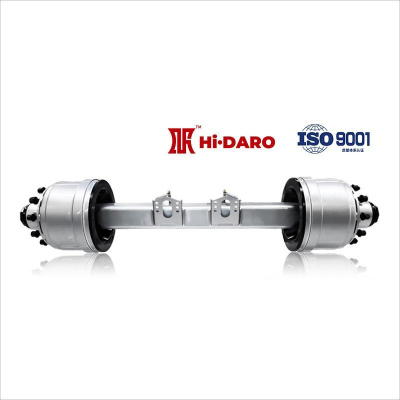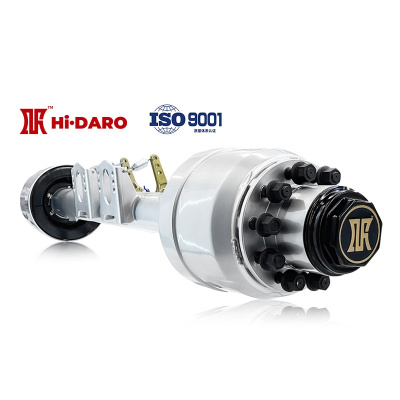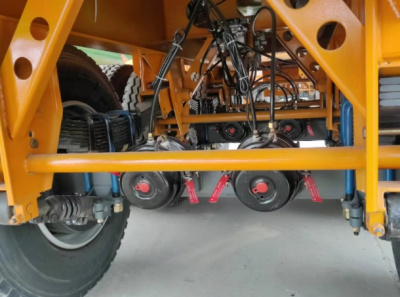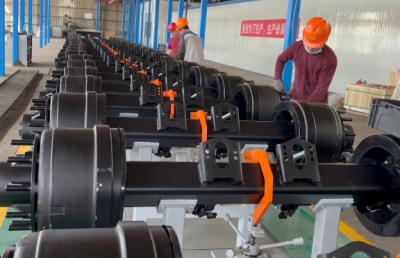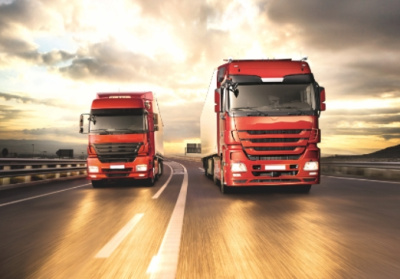Inventory of "Hundred Ton King" chaos hardest hit areas
"Overloading and exceeding the limit" has always been a key area of strong crackdown and control by the traffic management department. Although the regulations clearly stipulate that the maximum gross weight limit of trucks cannot exceed 49 tons, driven by interests, some criminals still increase the load capacity of vehicles to hundreds of tons or even hundreds of tons by illegal modification methods such as thickened steel plates and heightened cargo compartments.
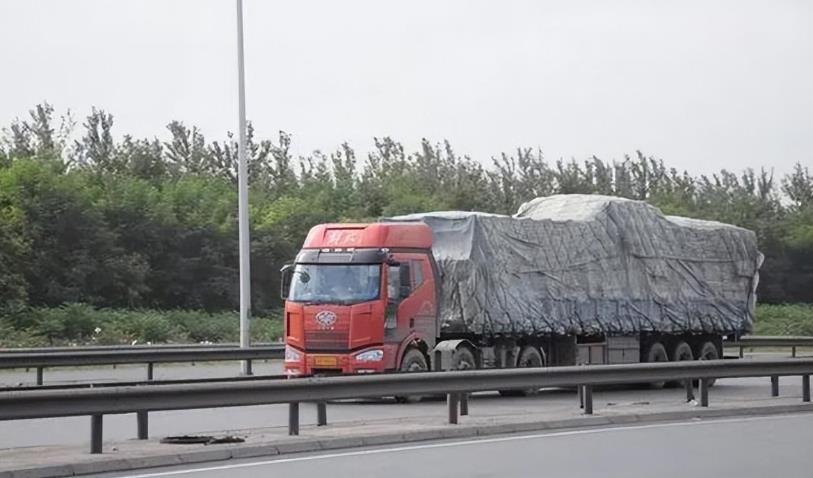
The "hundred-ton king" refers to illegal transport vehicles with a total weight of more than 100 tons and serious overloading and exceeding the limit. It is also known as the "first killer" of road traffic.
Today, together with the DARO trailer axle, we will take stock of the hardest-hit areas where the "hundred-ton king" is full of chaos.
1. Dump truck
If you want to say where the earliest source of "Hundred Ton King" is, it is probably in the field of self-unloading.
From the point of view of use, dump trucks can be divided into two categories: one is for off-road transportation, mainly responsible for large-scale mines, engineering and other transportation tasks, and is usually used in conjunction with excavators; the other is for road transportation, mainly responsible for the transportation of loose goods such as sand, soil, and coal, and is generally used in conjunction with loaders.
Since the application scenarios of dump trucks are generally remote mines or construction sites, and they rarely enter or leave the urban area during the day, they avoid the investigation and punishment of the traffic police department to a large extent, and overloading is not uncommon. In order to improve the passing capacity of dump trucks, some car owners have modified the tires into self-made track systems, and the title of "wetland chariot" is not for nothing.
2. Car transporter
Traditional sedan vehicles are also the hardest-hit areas of the "hundred-ton king", and are nicknamed "land aircraft carriers".
In order to be able to pull more cars, some car owners have tampered with the carriage, such as lengthening the car by modifying the push-pull rear structure, or widening the upper pallet to change the single row to double row, thus deriving different models such as "single row", "single cage", "small cage", "two monsters", "T cage", "airplane jump" and "big monster". It is easy to load 20 or even more than 30 cars.
After transporting the vehicle to the destination, some car carriers cannot find the source of goods on the return journey, and they will also undertake general cargo transportation. You must know that the loading capacity of double-layer aircraft boards is more terrifying than that of 17.5 large boards. There are more loads and less freight, which has caused great trouble to the transportation market.

3. Car train
A tractor can tow two or three carriages, the length can reach 30 to 40 meters, and the loading capacity is almost equivalent to the compliance loading capacity of three 9×6 trucks.
Due to the constraints of length and weight, it is difficult for such a model to turn or turn around on a narrow road section, and it is more difficult to drive. The driving stability is poor, and it is easy to swing up and down or left and right when running.
4. Large trolley
When it comes to the "hundred-ton king", we have to mention the big truck that many car owners love and hate. The scientific name of the large truck is a low-bed semi-trailer. According to the regulations, it is a special type of vehicle, which is specially used to transport large and non-disassembled goods. Its length can reach up to 17.5m. After the introduction of the new regulations, its length is limited to 13.75m.
In practical applications, the large truck is no longer a special transport vehicle for large and non-disassembled goods, but has become a "hundred-ton king" that can pull all kinds of goods. Whether it is less-than-truckload, department stores or Lutong, all are included in its transportation objects. Because its length is longer than that of ordinary trailers, it has obvious advantages in loading capacity. The goods are bundled around and covered with a sheet of tarpaulin, which is almost "invincible all over the world".
5. Cement tanker
Under normal circumstances, the loading capacity of cement tank trucks running on the road during the day is about 30 cubic meters, and those super large tank trucks exceeding 100 tons generally use short and medium distances to avoid traffic police, and even go on the road at night. In order to be able to load more, many cement factories will also adopt the method of shaking the tank, shaking the cement powder in the cement tank that has been filled once, and shaking it firmly to obtain more loading space.
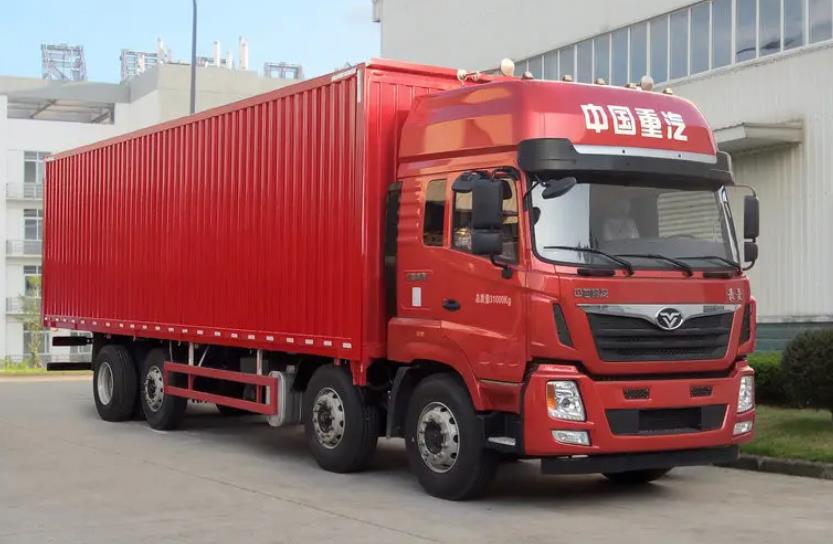
I have to admit that these "hundred-ton kings" can indeed earn higher freight than ordinary car owners at the beginning, and even tens of thousands of freight for one trip, but violations of laws and regulations will eventually harm others and themselves.
The first is the safety aspect. Under long-term overloading and exceeding the limit, the performance of the vehicle will drop sharply, which will easily lead to broken axles, punctures, twisted tires, broken beams, and even the cargo directly crushing the cargo compartment. What’s more, it will cause the bridge to break and the bridge to collapse.
Secondly, at the industry level, with the passage of time, the freight market is also quietly changing. The freight rate is almost rotten. The profit that used to be a few thousand yuan per trip is now only a few hundred yuan.
Nowadays, the traffic control department is tightening the investigation and punishment of overloading and exceeding the limit. Many car owners have realized that if they want to reverse the low freight rate situation and let the freight industry develop healthily and long-term, running the standard load may be the long-term solution. Some car owners also pointed out that if they want to eradicate the chaos of overloading and overrunning, simply punishing car owners is a temporary solution, not the root cause. It is necessary to start from the source and effectively implement "one overhaul and four penalties", so as to completely eliminate the chronic diseases of the freight industry.
